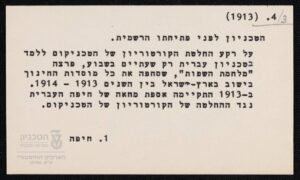Following the decision of the Technikum Board of Trustees to teach Hebrew at the Technion for only two hours a week, prior to its official opening, the “Language War” erupted. The Language War swept through all educational institutions in the Jewish community in the Land of Israel between the years 1913-1914. In 1913, a protest assembly was held by the Hebrew community of Haifa against the Board of Trustees’ decision regarding the Technikum. The war concluded in 1914 with the decision that the language of instruction would be Hebrew.
primary language of instruction in the network of the “Ezra” Society, which was one of the leading educational organizations in its field. The Language War erupted simultaneously in two places, one being the “Technikum” of that time, which later became the Technion – Israel Institute of Technology. The debate was essentially about the language of instruction in the high school that was to be established near the Technion. The school in question is the “Reali” school, which was indeed opened later, but not within the network of schools of the “Ezra” Society founded by German Jews. On October 26, 1913, the Board of Trustees of the Technikum, as it was called, convened and decided that the natural sciences would be taught in German because, as a cultural language, it could serve as a bridge to the development of modern science. Three members of the Board of Trustees, who vehemently opposed this decision, resigned in protest: Ahad Ha’am, Shmaryahu Levin, and Yehiel Chelnov. This effectively marked the beginning of what was called the “Language War”. The public struggle was mainly conducted in Jerusalem. The opponents objected primarily to the potential of German becoming the language of instruction, rather than the mere teaching of the language. They were adamant about not replacing one diaspora with another, while bowing to the spirit of German culture.
During the summer vacation of the year 5673 (1913), students of the first Hebrew seminary, established by David Yellin, began a vigorous campaign to establish Hebrew as the language of instruction. Several weeks before the outbreak of the conflict, Dr. Paul Nathan, the director of the “Ezra” network, arrived in the country from Berlin. A letter was addressed to him, urging him to recognize the right of Hebrew as a subject of instruction in the “Ezra” network. He refused. In protest, many teachers in the country submitted their resignation letters, followed by a mass exodus of students from the school. Eventually, the influence of foreign languages waned, not only German but also English and French. A correspondent for the “Ezra” Society accelerated the process of embedding the Hebrew language throughout the entire education system in the country.
From the Archives:
In 1913, a fierce protest erupted in the community over the choice of the language of instruction at the Technion between Hebrew and German. On February 22, 1914, after a prolonged struggle, the Technikum Curatorium in Berlin declared Hebrew as the institution’s official language.
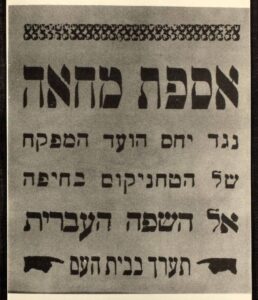
–
Protest assembly of Hebrew Haifa against the curatorium, during the “Language War” – 1913.
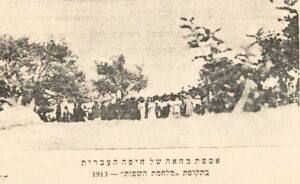
–
70 Years Since the Language War – “… The Language War erupted simultaneously in two locations, the first being the ‘Technikum’ of that time which later became the Technion, Israel Institute of Technology. The debate essentially revolved around the question of which language would be used for teaching at the high school that was planned to be established near the Technion. The school in question was the ‘Reali’ school, which indeed opened later, but not within the framework of the network of schools of the ‘Ezra’ society, founded by German Jews.”
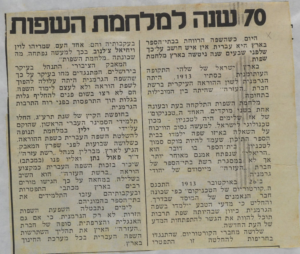
–
Mr. Jacob Schiff (1847-1929) was a leader of American Jewry and a banker from New York. He donated $100,000 for the construction of the Technion. During the “Language War,” Mr. Jacob Schiff supported the proponents of the Hebrew language. In 1919, he made a second donation of approximately $100,000 for the purchase of the Technion’s property from the “Ezra” Society.
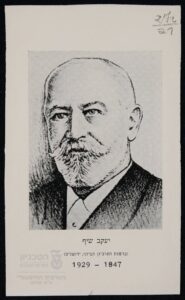
–
